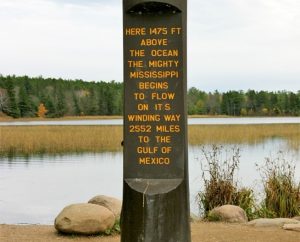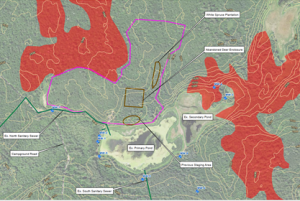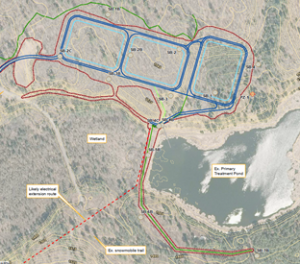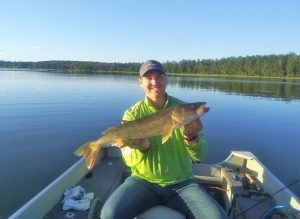One of the most iconic places in Minnesota to visit is Itasca State Park, home to the headwaters of the great Mississippi River. Established in 1891, Itasca is also the oldest Minnesota state park and the second oldest in the country — a 32,000-acre preserve of old growth pine trees, a wilderness sanctuary, historic lodge and more than 100 lakes. Visited on average by nearly half a million people each year, ensuring the functionality and sustainability of the park’s infrastructure, water and wastewater systems is of utmost importance for its continued success.

The MnDNR recognized a vital need to upgrade the park’s wastewater infrastructure, a system that consisted of wastewater ponds, seven lift stations, three miles of force main and seven miles of gravity sewer and septic tanks. The main components needing attention were the existing 23-acre primary and 5-acre secondary wastewater ponds that had been in operation since 1965. Receiving flow from the busy Douglas Lodge, as well as park campgrounds and the UMN forestry campus, the ponds had served the park well for years — monitored by nine groundwater wells that never witnessed signs of contamination. Still, the pond design was largely outdated and no longer met more modern codes and standards for adequate effluent discharge. This would not be a conventional wastewater project. Design needed to carefully balance preserving natural resources, protecting old growth tree stands, rare plant species, and preventing invasive species while minimizing construction impacts to a variety of historical, environmental and archaeological sites within the park.

Mapping to monitor the location of wells and old growth tree stands.
MSA first performed field inspection and topographic survey of the existing stabilization pond system before providing a facility planning document that met MPCA requirements for system improvements. Topics tackled in the plan included a background on the park, sanitary system and existing wastewater flow and loadings. An evaluation of inflow and infiltration and projection of future flow and pollutant loadings were performed using existing park visitor and pumping data — as well as an understanding of future expansion plans for the park. MSA then proceeded to evaluate potential alternatives to rehabilitate or replace the existing system. In all, four treatment alternatives and five effluent discharge alternatives were evaluated through a cost-effective analysis considering construction cost, O&M cost and present worth to represent the entire lifecycle cost of each alternative. A separate non-monetary evaluation was performed on each alternative, addressing items such as constructability, ease of operation, treatment performance, mechanical reliability, ease of expansion, visitor disturbance and resource impacts.
After completing the full evaluation, it was determined that construction of new stabilization ponds uphill from the existing ponds should be pursued along with extension of the existing collection system, and addition of a main lift station. Further evaluation of the effluent discharge alternatives determined the continued use of the existing ponds, but as infiltration basins was the best alternative.

Pond placement diagram.
After the park secured funding to move into design development, MSA was selected to perform the design of the new facility, get it permitted and guide the DNR through construction. A team of subconsultants was gathered that included American Engineering Testing (geotechnical investigation) and Waterbalance & Operations (construction observation). MSA provided topographic survey, wetland delineation, biosolids assessment and the design of 1,800 LF of gravity sewer extension, 600 LF of force main, a new main lift station, 2,300 LF of pond piping, influent splitter box, two flow diversion structures, three outlet control structures and flow monitoring systems, electrical extension and controls.
Siting required a careful balance of grading and the minimization of large trucks hauling through the park to minimize the need for hauling material and avoid adverse impacts to the surrounding sensitive environment and visitor experience. MSA also provided a plan to reuse the existing stabilization ponds and groundwater monitoring wells.
MSA worked with the selected contractor over two construction seasons to provide construction staking, materials testing, construction administration, construction observation and groundwater monitoring well installation. DNR requested bi-monthly construction meeting, both onsite and remote, as well as weekly inspection reports. MSA also provided operator training, record drawings and a full facility operation & maintenance manual.
The resulting wastewater system upgrade is well-positioned to provide seamless, efficient wastewater handling for the large volume of enthusiastic visitors each year. In addition, the headwaters of the Mississippi River will be more protected than ever, with the safety and integrity of the surrounding park ecosystem intact, reinforced, and ready for future generations to enjoy.

Lucas Jones, MSA Project Manager, after a construction meeting, with this 26.5-inch walleye caught on Lake Itasca.
